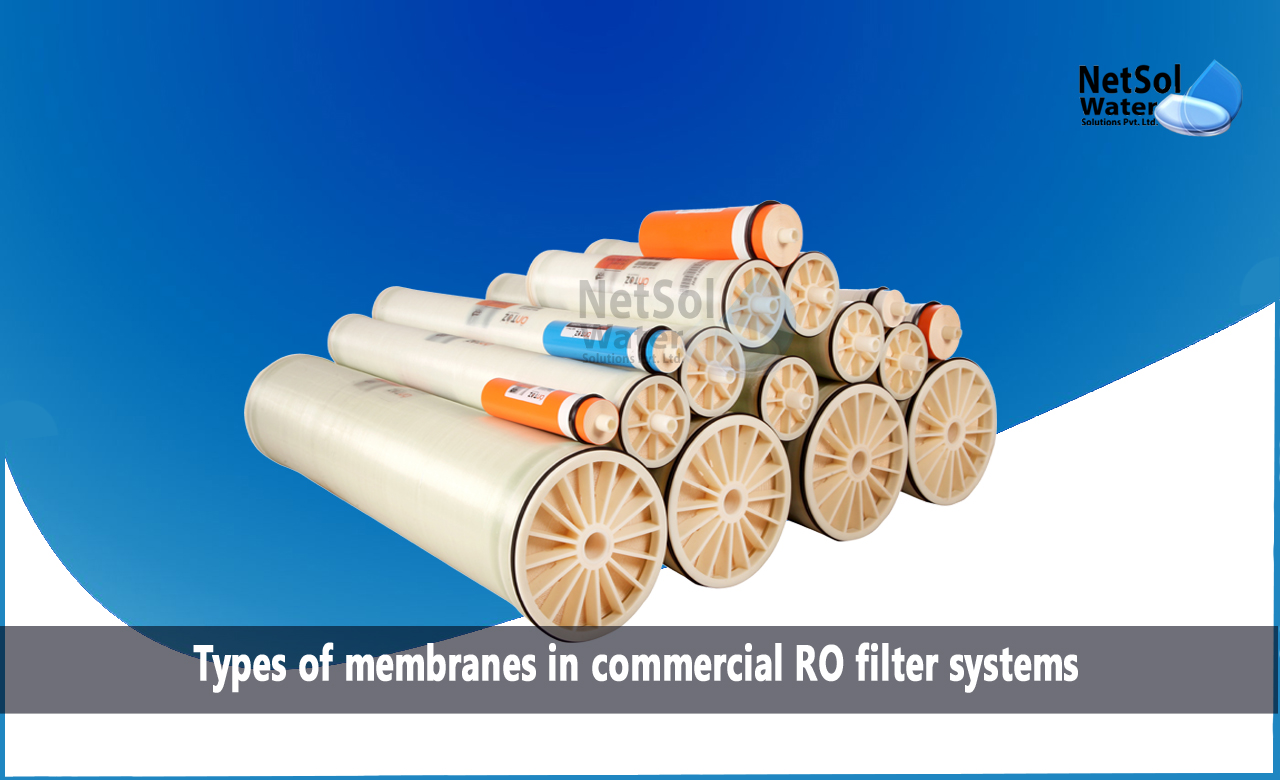How Many Types of Membranes Used in Commercial RO Plants?
Membranes in commercial RO plants refer to the thin, semi-permeable sheets that are used to separate impurities from water during the reverse osmosis process. These membranes are typically made of a polymer material, such as polyamide, and are designed to allow water molecules to pass through while blocking the passage of dissolved solids, such as salts and minerals.
During the reverse osmosis process, the feed water is passed through a series of membranes, which remove impurities and produce purified water. The membranes in commercial RO plants are typically arranged in a spiral-wound configuration, with each membrane separated by a permeate spacer to allow for maximum surface area and efficiency.
Membranes are a critical component of commercial RO plants, as they determine the quality and quantity of water produced by the system. The type and quality of the membrane used in a commercial RO plants will depend on the specific application and the quality of the source water, as well as other factors such as the operating pressure and temperature.
We will study the various types of membranes used in commercial RO plant.
Types of membranes in commercial RO plants:
There are several types of membranes used in commercial RO plants. Some of the most common types include:
1· Thin Film Composite (TFC) Membranes: These are the most widely used membranes in commercial RO systems. They consist of a thin polyamide layer on top of a polysulfone layer, which provides excellent rejection of dissolved solids and other impurities.
2· Cellulose Acetate (CA) Membranes: These membranes are less commonly used in commercial RO systems due to their lower rejection rates and susceptibility to degradation by chlorine. However, they are still used in some specialized applications, such as in the treatment of wastewater.
3· Hollow Fiber Membranes: These membranes consist of small tubes with porous walls, which allow water to pass through while blocking impurities. They are typically used in smaller-scale applications, such as in residential RO systems.
4· Nanofiltration (NF) Membranes: These membranes have larger pore sizes than RO membranes, allowing some dissolved salts and organic molecules to pass through while blocking others. They are typically used in applications where the water needs to be softened, such as in the production of beverages.
The choice of membrane will depend on the specific application and the quality of the source water. In general, TFC membranes are the most versatile and widely used in commercial RO systems, due to their high rejection rates and resistance to fouling.
Choosing the best reverse osmosis membrane:
Choosing the right reverse osmosis (RO) membrane depends on several factors, including the quality of the feed water, the intended application, and the desired water quality. Here are some factors to consider when choosing an RO membrane:
1· Water quality: The quality of the feed water is the most important factor to consider when selecting an RO membrane. You should test the water to determine the levels of contaminants such as total dissolved solids (TDS), hardness, and organic matter. Different membranes are designed to handle different levels of these contaminants, so you should choose a membrane that is appropriate for the quality of your feed water.
2· Membrane type: There are different types of RO membranes, including cellulose acetate (CA), thin-film composite (TFC), and high-rejection (HR) membranes. TFC membranes are the most common and have the highest rejection rates for TDS and other contaminants. CA membranes are less common and have lower rejection rates, but they are less expensive and can be effective in some applications.
3· Membrane size: Membranes come in different sizes, with larger membranes providing higher flow rates but lower rejection rates. Smaller membranes are better for removing contaminants but may not be as efficient in terms of water production.
4· Operating conditions: The operating pressure and temperature of the RO system can also affect membrane performance. Higher pressure can increase water production but may reduce membrane life, while higher temperatures can reduce the effectiveness of the membrane.
5· Certification: Look for RO membranes that are certified by organizations such as NSF International or the Water Quality Association. Certification ensures that the membrane has been tested and meets certain standards for performance and safety.
Do you need an advice or assistance on selecting the best water and waste water treatment unit? We have solutions for all your problems!
Let us now your problem, our experts will make sure that it goes away.
For an assistance or related query,
Call on +91-965-060-8473 Or write us at enquiry@netsolwater.com



